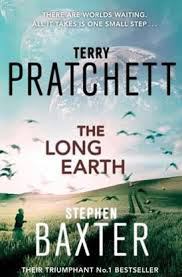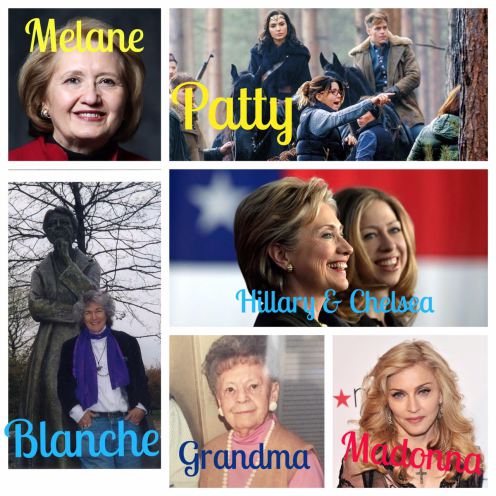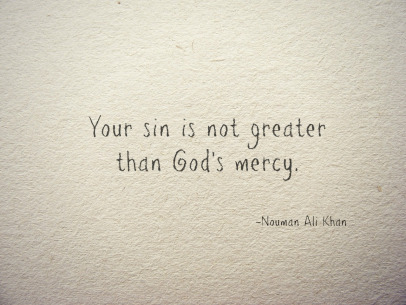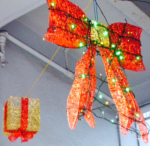 Christmas started arriving in September as the shops displayed Christmas cards and decorations, in a widely expanded development of the twelve days of Christmas of the burning of the yule log (for some, a euphemistic interpretation of pagan sacrifice).
Christmas started arriving in September as the shops displayed Christmas cards and decorations, in a widely expanded development of the twelve days of Christmas of the burning of the yule log (for some, a euphemistic interpretation of pagan sacrifice).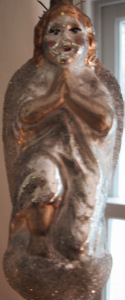
Christmas however, was effectively deconstructed in 1994 by the cultural analyst Margaret Visser. In her book The Way We Are (Harper Collins) on the extraordinariness of everyday life, which included the significance of knitting, greetings, beards, umbrellas, caviar and ‘paying attention to snow’, she considers the repressed cultural meanings of Christmas and why it continues to attract so much attention. If Christmas was once a pagan feast of fertility, it has become one of pure consumption.
Santa Claus is a symbol of giving and domesticity, a fertility figure: both pregnant (he is fat and carries a sack) and phallic – ‘dressed in red and coming down the chimney leaving a present in the stocking’. Similarly, the biblical Christmas involves old men giving gifts to a child which may originate in heaven. But also Visser suggests the importance of Santa as an initiation device, where children sooner or later lose innocence and enter the age of reason when they find out that things are not how they appear.
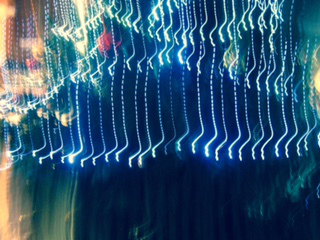 ‘Hearth symbolism’ is at the centre of Christmas, where the Celtic yule log (another phallic symbol) was burnt. Fireplaces as altars to community and belonging become shrines which are garlanded with decorations and Christmas cards from absent loved ones. Christmas, as a time of consumption (as opposed to production) has become Capitalism’s equivalent of the ancient Roman celebration of Saturnalia where the fire was a symbol of continuity. Housed in a temple, and tended by vestal virgins (the goddess of the hearth in ancient Greece was Vesta) who were punished if they ever let the fire go out, the hearth symbolised the permanence and stability of the Roman state.
‘Hearth symbolism’ is at the centre of Christmas, where the Celtic yule log (another phallic symbol) was burnt. Fireplaces as altars to community and belonging become shrines which are garlanded with decorations and Christmas cards from absent loved ones. Christmas, as a time of consumption (as opposed to production) has become Capitalism’s equivalent of the ancient Roman celebration of Saturnalia where the fire was a symbol of continuity. Housed in a temple, and tended by vestal virgins (the goddess of the hearth in ancient Greece was Vesta) who were punished if they ever let the fire go out, the hearth symbolised the permanence and stability of the Roman state.

With the coming together of the yule log, decorated in mistletoe the hearth is also ‘a symbol of sexual union’, whilst turkeys (as traditional Christmas dinner) have had their breasts genetically enlarged making them ‘incapable of reproducing without intervention and making it difficult to stand on their feet’.
According to Visser, Christmas is a feast heavy in fertility symbols. The pudding -‘unreasonably solid, fatty, rotund…a snub to everything thin, light and mobile’; the holly and the ivy Celtic symbols of male and female in the winter solstice observance (evergreens were part of the celebration of life and renewal); the Christmas tree – a representation of the feminine within which ‘ancient mythologies about women are incorporated’ (its ‘dress’ and ‘skirts’). Visser also asserts that the tree is also part of the German Protestant war against Catholicism’s literal depiction of the human form and, like the yule log an appropriation of nature.
Advertisements Share this:
